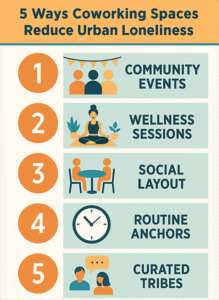In this article, we explore the HUL Business Model to explain and understand how the Business Model of HUL is structured.
Hindustan Unilever Limited (HUL) is one of India’s largest Fast-Moving Consumer Goods (FMCG) companies and an industry leader in the market. It is a subsidiary of the British-Dutch company, Unilever, which owns a 67% controlling share in HUL. The company’s portfolio includes a vast range of products, including food and beverages, home care, personal care, and more. HUL is a prime example of a successful business model in action, utilizing Alexander Osterwalder’s Business Model Canvas to create value and sustain growth.
In this blog post, we will explore HUL’s business model, delving deep into its history, founders, and the story of how it was started. We will then analyze the nine components of the Business Model Canvas to understand the factors contributing to HUL’s remarkable success.
The Founding Story: A Tale of Two Companies
HUL’s journey began in the late 19th century, with the establishment of two separate companies: Lever Brothers, founded by William Hesketh Lever in 1885 in the UK, and the Tata Oil Mills Company (TOMCO), founded by Jamsetji Tata in 1917 in India.
Lever Brothers was a soap and detergent manufacturer with a mission to make cleanliness commonplace and lessen the workload for women. William Lever, along with his brother James, developed the world’s first packaged, branded laundry soap, Sunlight. As Lever Brothers expanded its global reach, it entered India in 1933, merging with TOMCO in 1956 to form Hindustan Lever Limited (HLL).
In 2007, HLL was renamed Hindustan Unilever Limited (HUL) to reflect the global identity of its parent company, Unilever. Today, HUL boasts a vast product portfolio and strong market presence, thanks to its robust business model.
The Business Model Canvas of HUL: A Framework for Success
Alexander Osterwalder’s Business Model Canvas is a strategic management tool that provides a holistic view of an organization’s core components. It consists of nine building blocks: Customer Segments, Value Propositions, Channels, Customer Relationships, Revenue Streams, Key Resources, Key Activities, Key Partnerships, and Cost Structure. Let’s dissect each component in the context of HUL’s business model.
- Customer Segments
HUL’s customer segments are diverse, encompassing households, businesses, and rural and urban populations across India. The company’s products cater to various income groups, with offerings ranging from affordable, mass-market options to premium, niche products. By understanding and targeting different customer segments, HUL has built a loyal customer base and secured a significant market share.
Examples:
- Wheel: An affordable detergent targeting price-sensitive, rural households.
- Dove: A premium personal care brand catering to urban customers seeking high-quality products.
- Value Propositions
HUL’s value propositions focus on providing high-quality, innovative, and affordable products to meet the diverse needs of its customers. The company’s extensive research and development (R&D) capabilities have enabled it to deliver differentiated products that address specific consumer needs and preferences. Additionally, HUL’s strong brand portfolio, robust distribution network, and commitment to sustainability have further strengthened its value proposition.
Examples:
- Lifebuoy: Offering affordable, germ-protection soaps and sanitizers to promote health and hygiene.
- Surf Excel: Providing innovative cleaning solutions that save water, time, and effort.
- Channels
HUL’s distribution network is one of its most significant competitive advantages. The company reaches millions of consumers across India through a multi-tiered distribution system, including wholesalers, distributors, and retailers. This extensive network enables HUL to ensure product availability and penetrate even the most remote areas. Additionally, HUL leverages e-commerce platforms and direct selling channels to reach tech-savvy, urban consumers.
Examples:
- Project Shakti: An initiative that empowers rural women by providing them with micro-enterprise opportunities as HUL product distributors.
- E-commerce partnerships: Collaborating with leading e-commerce platforms like Amazon and Flipkart to reach online shoppers.
- Customer Relationships
HUL focuses on fostering strong customer relationships by understanding and addressing their needs and preferences. The company invests in market research, customer feedback mechanisms, and consumer engagement initiatives to maintain a pulse on consumer trends and insights. HUL also emphasizes excellent customer service, ensuring prompt resolution of customer complaints and queries.
Examples:
- HUL’s Customer Insight and Innovation Centre (CiiC): A dedicated facility for understanding consumer behavior and preferences to develop innovative products.
- Active social media presence: Engaging with customers on platforms like Facebook, Twitter, and Instagram, promoting transparency and open communication.
- Revenue Streams
HUL generates revenue through the sale of its diverse product portfolio, catering to a wide range of customer segments. The company’s revenue streams are driven by its robust distribution network, strong brand equity, and innovative product offerings. HUL continuously strives to optimize its product mix and pricing strategy, ensuring steady revenue growth and profitability.
Examples:
- HUL’s revenue from the home care segment, including brands like Surf Excel, Vim, and Domex, accounted for approximately 34% of its total revenue in 2020.
- The personal care segment, including brands like Dove, Ponds, and Axe, contributed around 49% of HUL’s total revenue in 2020.
- Key Resources
HUL’s key resources include its strong brand portfolio, R&D capabilities, extensive distribution network, manufacturing facilities, and skilled workforce. These resources enable the company to develop, produce, and distribute high-quality products, ensuring customer satisfaction and loyalty.
Examples:
- HUL has over 35 manufacturing facilities across India, ensuring efficient production and supply chain management.
- The company’s skilled workforce, comprising over 18,000 employees, drives innovation and operational excellence.
- Key Activities
HUL’s key activities revolve around product development, manufacturing, marketing, and distribution. The company focuses on continuous innovation, addressing evolving consumer needs and preferences, and ensuring product quality and safety. HUL also invests in marketing and advertising initiatives to build brand equity and drive sales.
Examples:
- HUL’s R&D centers, like the Unilever R&D Center in Bangalore, work on product innovations and sustainable solutions for manufacturing processes.
- High-impact marketing campaigns, like Surf Excel’s “Daag Acche Hain” (Stains are Good), have resonated with consumers and reinforced brand loyalty.
- Key Partnerships
HUL’s key partnerships span across suppliers, distributors, research institutions, and NGOs. These collaborations enable the company to access critical resources, share risks, and enhance its social and environmental impact.
Examples:
- HUL collaborates with local and global suppliers for raw materials, packaging, and logistics, ensuring a cost-effective and efficient supply chain.
- Partnerships with NGOs and social enterprises, like Project Shakti, enable HUL to drive social impact and enhance its corporate social responsibility (CSR) initiatives.
- Cost Structure
HUL’s cost structure comprises raw material costs, manufacturing expenses, marketing and advertising costs, and distribution expenses. The company continuously focuses on optimizing costs and improving operational efficiencies to maintain profitability and deliver value to its customers.
Examples:
- HUL’s Project Symphony initiative aimed at driving end-to-end value chain optimization, resulting in significant cost savings
- The company’s adoption of sustainable manufacturing practices and energy-efficient technologies has helped reduce production costs and minimize its environmental footprint.
Hindustan Unilever Limited (HUL) stands as a testament to the power of a well-crafted business model. By leveraging Alexander Osterwalder’s Business Model Canvas, HUL has built a robust and sustainable organization that creates value for its customers, shareholders, and society at large.
HUL’s success lies in its ability to identify and address diverse customer segments, develop innovative and value-driven products, and establish a wide-reaching distribution network. Moreover, the company’s focus on building strong customer relationships, optimizing revenue streams, and efficiently managing its resources, activities, partnerships, and cost structure has been instrumental in its growth and profitability.
In the ever-changing landscape of the FMCG industry, HUL’s commitment to innovation, sustainability, and social responsibility sets it apart as a market leader. By analyzing HUL’s business model through the lens of Osterwalder’s Business Model Canvas, aspiring entrepreneurs and business leaders can glean valuable insights and lessons to apply in their own ventures.
With a solid understanding of the nine components of the Business Model Canvas, businesses can create comprehensive strategies that address their customers’ needs, maximize resources, and achieve long-term success. HUL’s journey, from its humble beginnings to its current market dominance, serves as an inspiring example for entrepreneurs to emulate and adapt to their unique contexts.
Remember to subscribe to our YouTube channel Work Theater Studios for more amazing business content!
Did you know? Entrepreneurs like to use our coworking space in Bangalore.
Learn more about our workspace on YouTube where we talk about a variety of topics including personal finance, entrepreneurship, business and life.
Did you know? We also have a private theatre in Bangalore.




